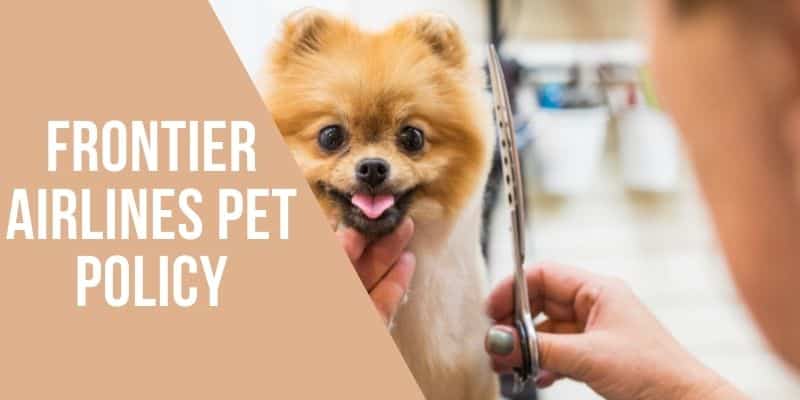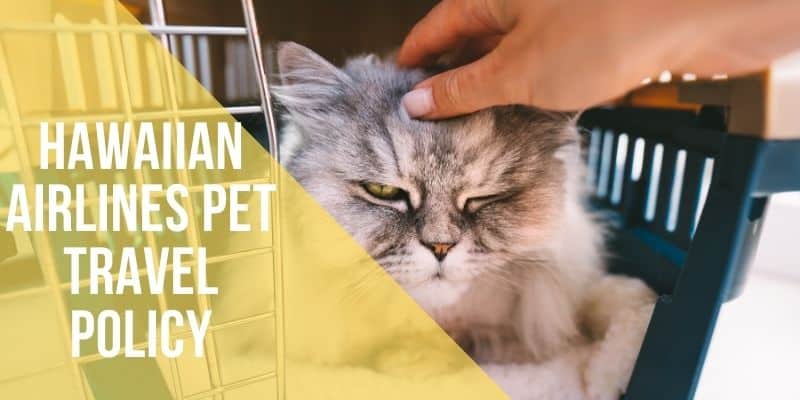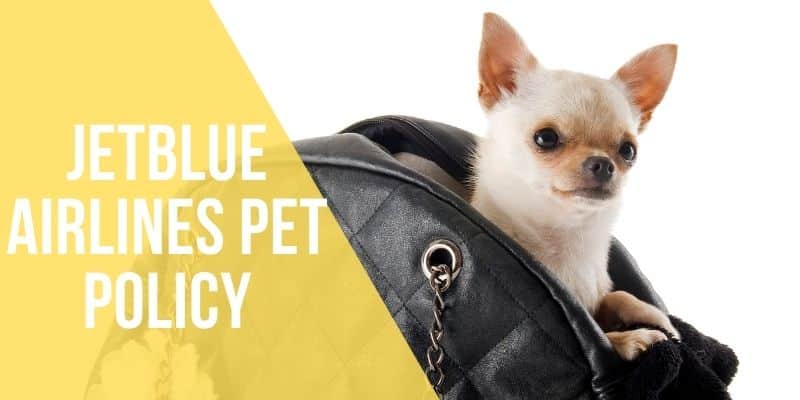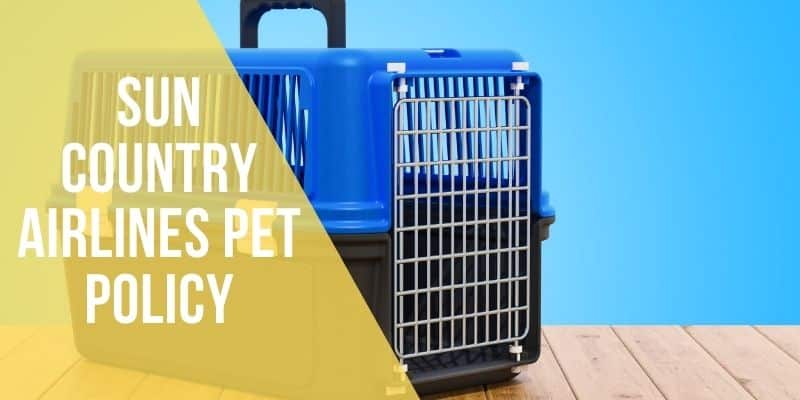Who can memorize the names of the hundreds or thousands of galaxies of our universe? No One, right? Similarly, there are hundreds of rules and prerequisites for air travel with pets. It is almost impossible to abide by them all. But we can remember some basics or must-have ones to accelerate the preparations and make the journey easier.
Whether it is your first air travel with your furry friend or you have traveled before, just use the checklist given below to have a nice trip with your pet.
Carry-On Pets
If you’re taking the pet with you inside the cabin, then make sure they listen to your words. Never let them growl or make sounds which can make other passengers and kids on the flight uncomfortable. Moreover, the flight attendants may also request you to take another corner seat.
The container of the pet should accommodate under your front seat. No airlines allow passengers to keep their pets out of the container or in the hallways where they obstruct the movement of flight attendants. So, they require pets to be inside the container throughout every stage of the flight and the container to stay under the passenger’s front seat.
Only service dogs and emotional support pets are allowed to stay outside the container. But they still can not be in the hallways.
Most of the airlines only allow pets weighing up to 20 lbs. So, if your pet is bigger or heavier than that, you should choose the Pets As Checked Baggage or Cargo option to transport the pet. Some airlines allow passengers to buy an extra seat for their pet. So, if the pet’s weight is within the limit set by the airline but too large to be kept under the seat, then you may consider buying an extra seat. The pet or its container can not be directly put on the seat, they still have to stay on the floor of that seat.
Pets are not served any food during the flight. So make sure to give your pet a healthy meal (Don’t overfeed) before the flight.
Suppose there is any possibility that the pet may suffocate during the flight. In that case, you may consider carrying an oxygen supply as oxygen will not be supplied to the pet by the airline in case of any emergency.
Pets As Checked Baggage
Pets that can not be taken inside of the cabin for their bigger sizes or just because the airline does not allow them to be in the cabin, must travel as checked baggage in the baggage compartment. Most airlines have temperature-controlled baggage compartments, but you have to be careful about choosing the right airline.
If you take your pet on air travel as checked baggage, the baggage compartment must be temperature controlled. Pets can be sensitive to high or low temperatures. So, if the compartment is not temperature controlled, their journey will be ruined and cause damage to their health and well-being.
Pets are not served any food during the flight. So make sure to give your pet a healthy meal (Don’t overfeed) before the flight. You may put some food and drink inside the container in separate pots if the airline allows it.
If you are transporting your pet as checked baggage, then make sure the container has proper ventilation holes for airflow. As the compartment remains closed and no one has access to it during the flight, pets can easily be subject to suffocation.
Don’t transport pets as checked baggage when the weather is too hot or too cold. Pets are very sensitive to ups and downs of temperatures. Although the compartment may be temperature controlled, it can still cause some discomfort to the pet as it remains closed.
It would be best to always choose a hard-sided container for pets as checked baggage. As they will be traveling with other luggage, sturdy containers will protect them during the take-off and landing.
Pets On Cargo
Pets generally travel as cargo on long-haul flights, so add some food and liquid to the container and attach proper feeding instructions on the container’s body so that the staff can feed the pet during the trip. You may also supply medication instructions if your pet needs them.
Make sure to pick up the pet from the terminal as soon as the plane lands at the target location. If you do not pick up the pet on time, they may be sent to pet hotel arrangements and it may cost you some charges.
A majority of airlines only take booking for cargo by pet forwarders. Which means individual pet owners can not do the work of reservation if they are willing to transport their pet as cargo. So, make sure you choose a forwarder with a positive reputation. You may look at their ratings to determine the quality of their service. Make sure the forwarder keeps you updated about your pet’s condition and do not have any hidden charges.
Almost all airlines follow the rules mentioned by the IATA. So, you may follow IATA regulations while choosing a suitable container for transporting your pet.
If this is the pet’s 1st journey, consult with the vet to figure out the best way to organize him for shipping.
Common Rules
The pet should be well-mannered.
Airlines do not really allow pets which show aggressive or attention-seeking behaviors in public. So, to travel by air, the pet should be trained to behave properly in public presence and listen to the owner’s instructions.
In case your pet is a service dog or emotional support pet, then this requirement is seen with more importance. As the manner of the pet is an indicator of the training which the pet should have received.
The breed of the pet should be suitable for air travel.
Some of dog and cat breeds may face breathing problems while traveling by air. Most airlines do not accept these breeds’ own safety and well-being.
Puppies and kitties should not be traveling.
Puppies and kitties aging less than 8 weeks are not allowed by any airlines. Air travel can be hazardous to the health of these small animals. Moreover, they require extra care, unfortunately, can not be provided while in the air.
The container should comply with the airline’s rules.
Different airlines have different size requirements for containers. But all of them have some features in common. They are,
- Air ventilation space.
- Hard-sided or soft-sided.
- Proper locking mechanism.
- Have enough space for the pet to stay inside comfortably.
- Should have handles etc.
Read the container requirements of the airline by which you will be traveling and purchase one that complies with all the requirements.
The pet should be used to being inside the container.
This is an important part. If the pet is not used to being inside the container, it may get uncomfortable on the day of the trip and show aggressive behaviors. So, make sure to purchase the container with time on hand and offer your pet some time to get along with it.
All the paperwork should be completed.
Besides some extra documents, most of the paperwork required by the airlines are the same. So, if somehow you can manage the documents in advance, half of your work will be already done. So common documents are :
- Health certificate.
- Rabies immunization certificate.
- Microchip.
- Import/Export permit and others.
Notifying the airline about the pet in advance.
Although some airlines allow passengers to add pets to their itinerary a minimum 2 days before the flight, it’s better to tell the airlines about your pet while booking your flight. If the pet needs some extra care or observances, they should also be specified.
Without prior notification, no airline allows pets in their aircraft.
Have some Identification information with your pet.
Incidents of pet’s getting lost have decreased now, because of the increased monitoring in the airports. But we should never forget to take precautions. Have an ID tag on your pet’s collar or get them microchipped with your updated location and contact number.
So that, if something bad happens, you can get back your pet easily.
Try choosing the “Pets in the cabin” option over “Pets as checked baggage”.
Studies have shown that pets stay calm and behave when around their owners in public. So, if they stay inside the cabin right beside you then their journey will be more pleasant. Whereas, dark baggage compartments can cause anxiety and other aggressive behaviors.
Try avoiding flights with transits and flights longer than 8 hours.
After going through all the procedures, boarding the plane and then having to get off and complete all of them again is a suffering for pets, just as it is for you! So try avoiding flights with transits and select a direct one.
Do not overfeed the pet.
Feeding the pet too much on the flight day can cause unnecessary accidents. Unless your flight is a long one, it is better not to feed the pet in between 4 hours of the scheduled departure. If the flight is long, then give proper instructions about feeding your pet to the staff and they will do the work for you.
Make sure the pet relieves itself before onboarding.
Just after arriving at the airport, find a nearby pet relief area and allow the pet to relieve itself. Never forget to do this part as airlines require owners to clean up in case the pet relieves itself while on air. Besides that, it will allow the pet to have a comfortable and enjoyable trip.
Check in and get on the plane as soon as you can.
Checking in with some time on hand will allow both you and the pet to prepare mentally for the flight. As per your request, they may also allow you to board the plane ahead of others so that you get enough time to settle in with your pet.
Service Animals and Emotional Support Animals
Service dogs should be accompanied by valid training documents, or they will not be recognized by the airlines anymore. Special collars indicating that they are service dogs must be on their neck. The pets must be trained to behave properly while in public and seen to perform their duty or sight.
Passengers without any disabilities are not allowed to have service dogs or emotional support pets with them. Passengers with disabilities must have a valid credential from an authorized doctor stating that the passenger needs the pet with him/her during air travel.
Most airlines do not require service or emotional support pets to travel inside a container. So, they may be seated on the lap of the owner (if the airline allows it) or in the owner’s foot space. On no occasion, service or emotional support pets may occupy a passenger seat. Some airlines (i.e British Airways) allow passengers to have a pet bed with them so that the service animals can rest there.
If the service or emotional support pet is too big to stay within the owner’s foot space, it can be shipped as checked baggage. In that case, they must be accompanied by a container.
You must inform the airline about your service animal or emotional support pet in advance so that their staff can assist you through the check-in process once you arrive at the terminal.
As service dogs normally travel without containers, they should be trained not to relieve themselves while on the flight. If they do so, the owner will be responsible for cleaning the waste.
Conclusion
So, that’s it! Just by making sure these requirements are met, your trip with the furry friend will become a more pleasurable one. Don’t miss any of the points above, unless you want to miss the onboarding.
Air transport will be most usually more difficult for larger breeds and those with an immune disorder, compromised immune structure, or chronic condition, as those cautions imply. If the animals fall into such classifications, just take flight with them if this is completely essential and ensure you’re well prepared to meet their necessities.
See more



